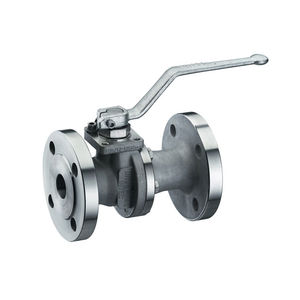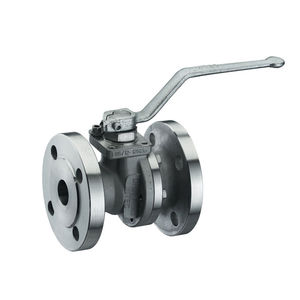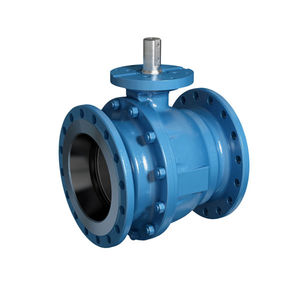
- Hydraulics - Pneumatics
- Valve
- Ball valve
- KLINGER-SCHÖNEBERG GmbH
- Products
- Catalogs
- News & Trends
- Exhibitions
Floating ball valve V 2000levercontrolshut-off

Add to favorites
Compare this product
Characteristics
- Type
- floating ball
- Operation
- lever
- Function
- control, shut-off
- Body
- threaded, large, brass
- DN
Max.: 2 in
Min.: 0.25 in
- Pressure
25 bar, 40 bar, 63 bar
(362.6 psi, 580.2 psi, 913.7 psi)- Temperature
Max.: 150 °C
(302 °F)Min.: -20 °C
(-4 °F)
Description
RK-Ball-o-top V 2000
Brass ball valve, threaded ends, full bore.
Features
DN 1/4" - DN 2"
two-piece split body
soft seated
floating ball
DVGW-approval (optional)
FTF dimensions acc. to producers standard
threaded ends acc. to EN 10226-1
full bore
RK-Ball-o-top - Brass Ball Valves
Brass ball valves with many advantages.
This low priced ball valve is the ideal economical shut-off valve for cold and hot water, compressed air, gases and oils.
Product Advantages
Maintenance-free
Corrosion-resistant
Smooth running
Solid design
Special Designs
Free of oil and grease
Certificates and Approvals
DVGW-approval (optional)
General Information
The specified pressure and temperature values showing the maximum range for orientation only. For the necessary design please note the pt diagram in the respective data sheet. Main criterion of the material code is the basic material of body and cap. The performance and service life of KLINGER valves depend to a large extent on proper storage and fitting - factors beyond the manufacture’s control. We can, however, vouch for the excellent quality of our products. With this in mind, please also take note of our operating instructions.
Catalogs
No catalogs are available for this product.
See all of KLINGER-SCHÖNEBERG GmbH‘s catalogsExhibitions
Meet this supplier at the following exhibition(s):

Related Searches
- Valve
- Hand valve
- Control valve
- Ball valve
- Stainless steel valve
- Pneumatic valve
- Threaded valve
- Regulating valve
- Lever control valve
- Stop valve
- Electric valve
- Valve with handwheel
- ISO valve
- Pneumatically-operated valve
- Biogas valve
- Piston actuator valve
- Valve for the chemical industry
- Nickel-plated brass valve
- Carbon steel valve
- DIN valve
*Prices are pre-tax. They exclude delivery charges and customs duties and do not include additional charges for installation or activation options. Prices are indicative only and may vary by country, with changes to the cost of raw materials and exchange rates.






























